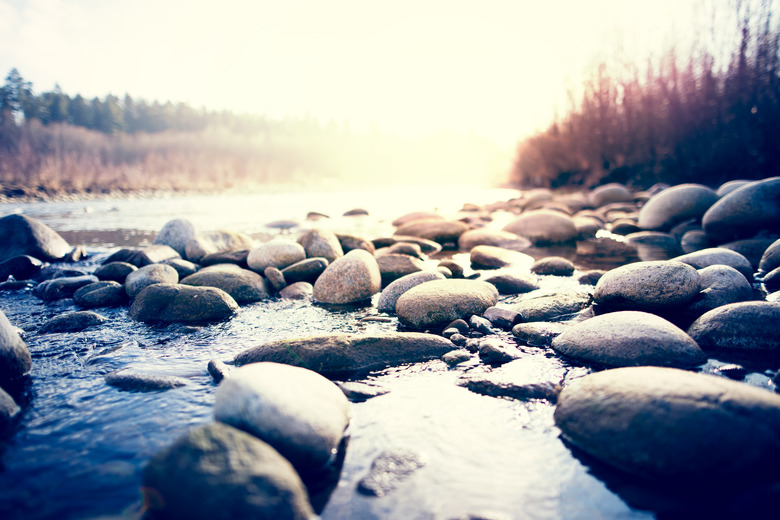How To Identify Valuable Rocks
Hiking through the woods or strolling along the beach, you may see an unusual rock, and – if it's your lucky day – the rock may be valuable. To determine if it has monetary value, test it for color and hardness, and inspect it for surface markings that may identify it as a meteorite.
Color Inspection
Color Inspection
Color is important, but by itself, color does not positively identify a mineral. The classic example is iron pyrite, which has a color that resembles gold so closely that people call it fool's gold. Color does help identify some rocks, such as the monochromatic azurite with its deep azure color, but many minerals have combinations or colors or hues caused by the presences of impurities. For example, amethyst is quartz, and it would be clear if it weren't infused with traces of iron. Determining the color helps you narrow the specimen to a class of minerals, using a mineral catalog as a guide.
The Streak Test
The Streak Test
When you crush a rock, its powder isn't always the same color as the rock itself, and this powder can help identify the minerals in the rock. You obviously don't want to crush your rock if you think it's valuable, but that isn't necessary. You can conduct a streak test with a piece of unglazed porcelain – the back of a porcelain tile is ideal. Swipe the stone across the tile and inspect the streak color. This test can help differentiate such minerals as gold, which leaves a yellow streak, from chalcpyrite, which leaves a black streak. This test doesn't work, however, if the mineral is harder than porcelain.
The Hardness Test
The Hardness Test
Mineralogist Frederich Mohs devised a scale from 1 to 10 to classify minerals by hardness. The harder a mineral is, the more likely it is to be valuable. If you can scratch the mineral with your fingernail, it has a hardness of 2.5 Mohs, which is very soft. If you can scratch it with a penny, its hardness is 3 Mohs, and if it takes a piece of glass to scratch it, the hardness is 5.5 Mohs. Any stone that scratches porcelain instead of leaving a streak has a hardness of about 6.5 Mohs. Diamond is the hardest mineral; its hardness is 10 Mohs, and you can scratch one only with another diamond.
Identifying Meteorites
Identifying Meteorites
Not all rare and valuable rocks originated on Earth; meteorites are rarer than gold or diamonds, and one can turn up almost anywhere. Because they look so much like common materials, such as lava rocks or slag from a smelting plant, it's easy to misidentify them. Unlike terrestrial materials, meteorites have a crust formed by the high heat generated by atmospheric friction, and they usually look blacker than surrounding rocks. They also have flow lines or dimples created as they streaked through the atmosphere in a semi-molten state. Chondrites, or stony meteorites, have small, multicolored globules of iron-nickel on the surface. You sometimes need a microscope to see these.
Cite This Article
MLA
Deziel, Chris. "How To Identify Valuable Rocks" sciencing.com, https://www.sciencing.com/identify-valuable-rocks-4473488/. 13 March 2018.
APA
Deziel, Chris. (2018, March 13). How To Identify Valuable Rocks. sciencing.com. Retrieved from https://www.sciencing.com/identify-valuable-rocks-4473488/
Chicago
Deziel, Chris. How To Identify Valuable Rocks last modified March 24, 2022. https://www.sciencing.com/identify-valuable-rocks-4473488/
